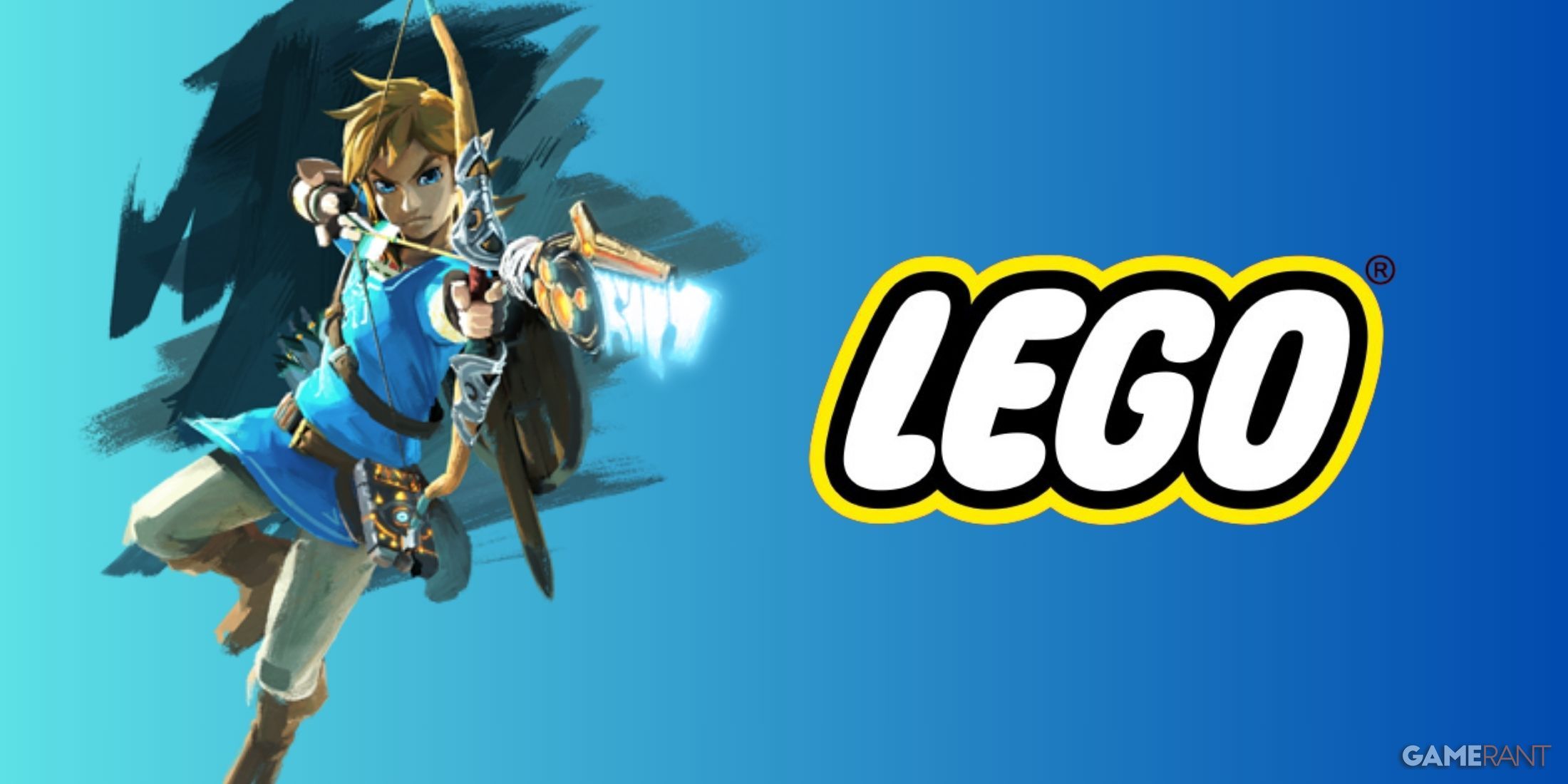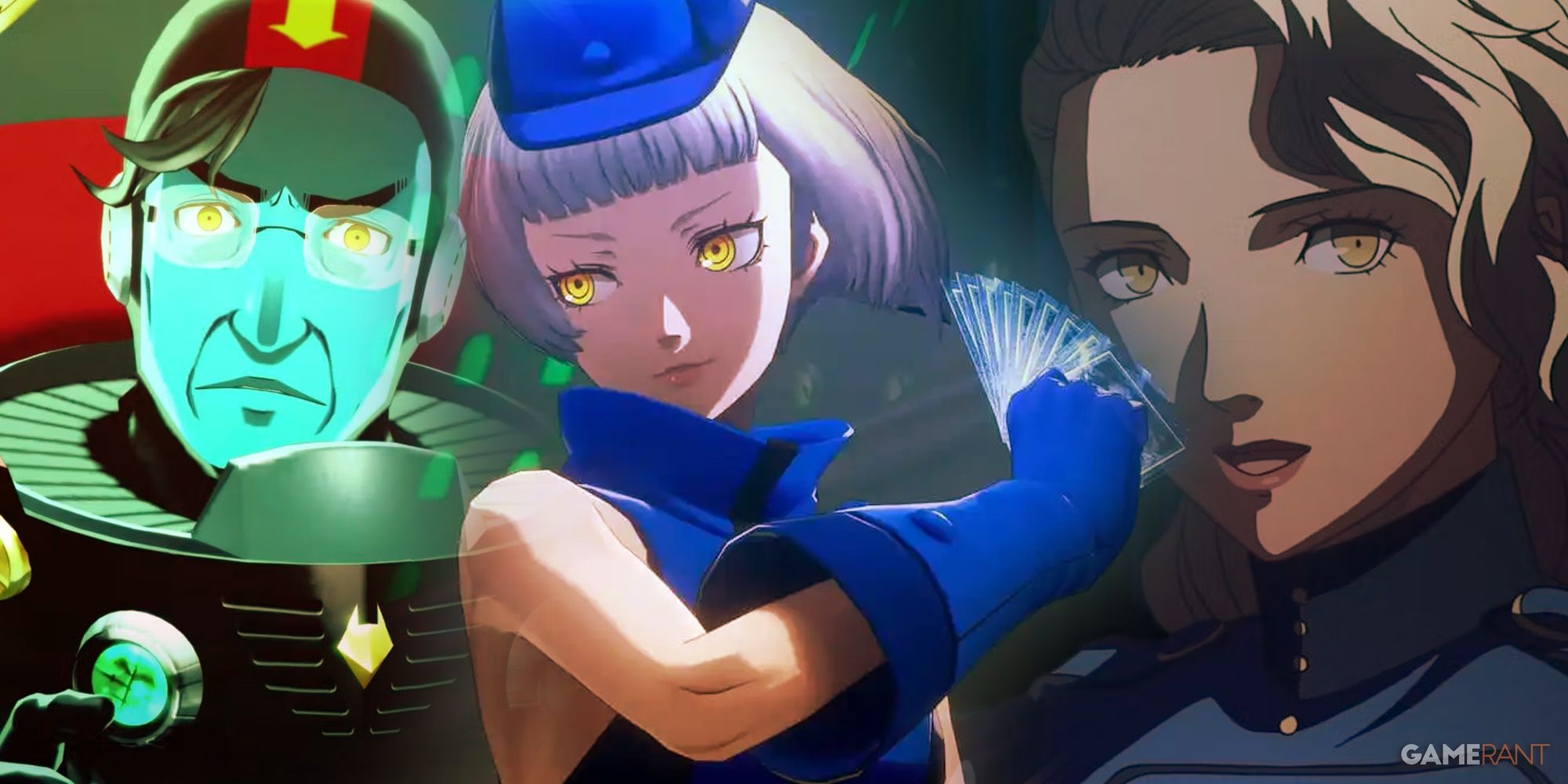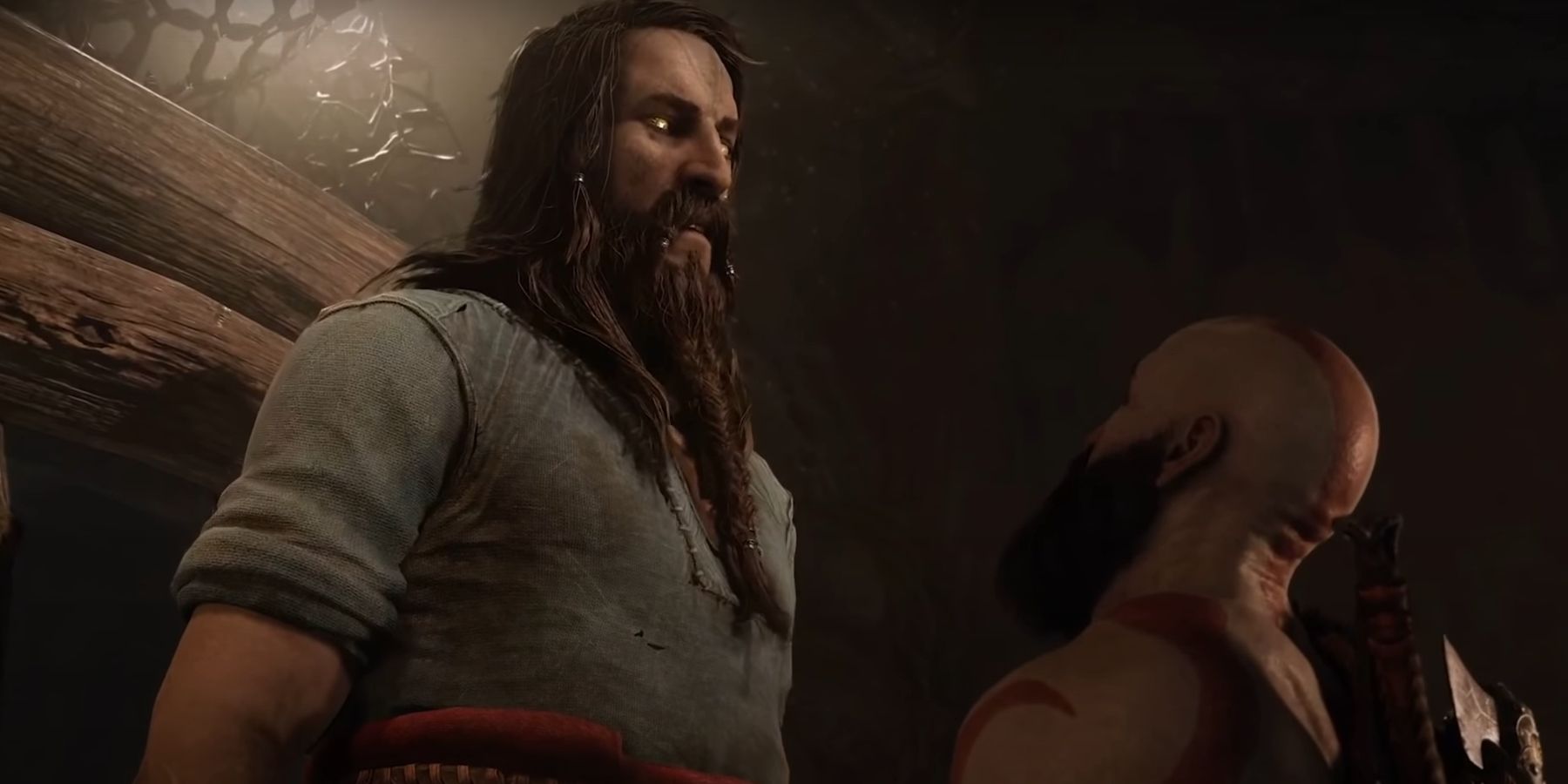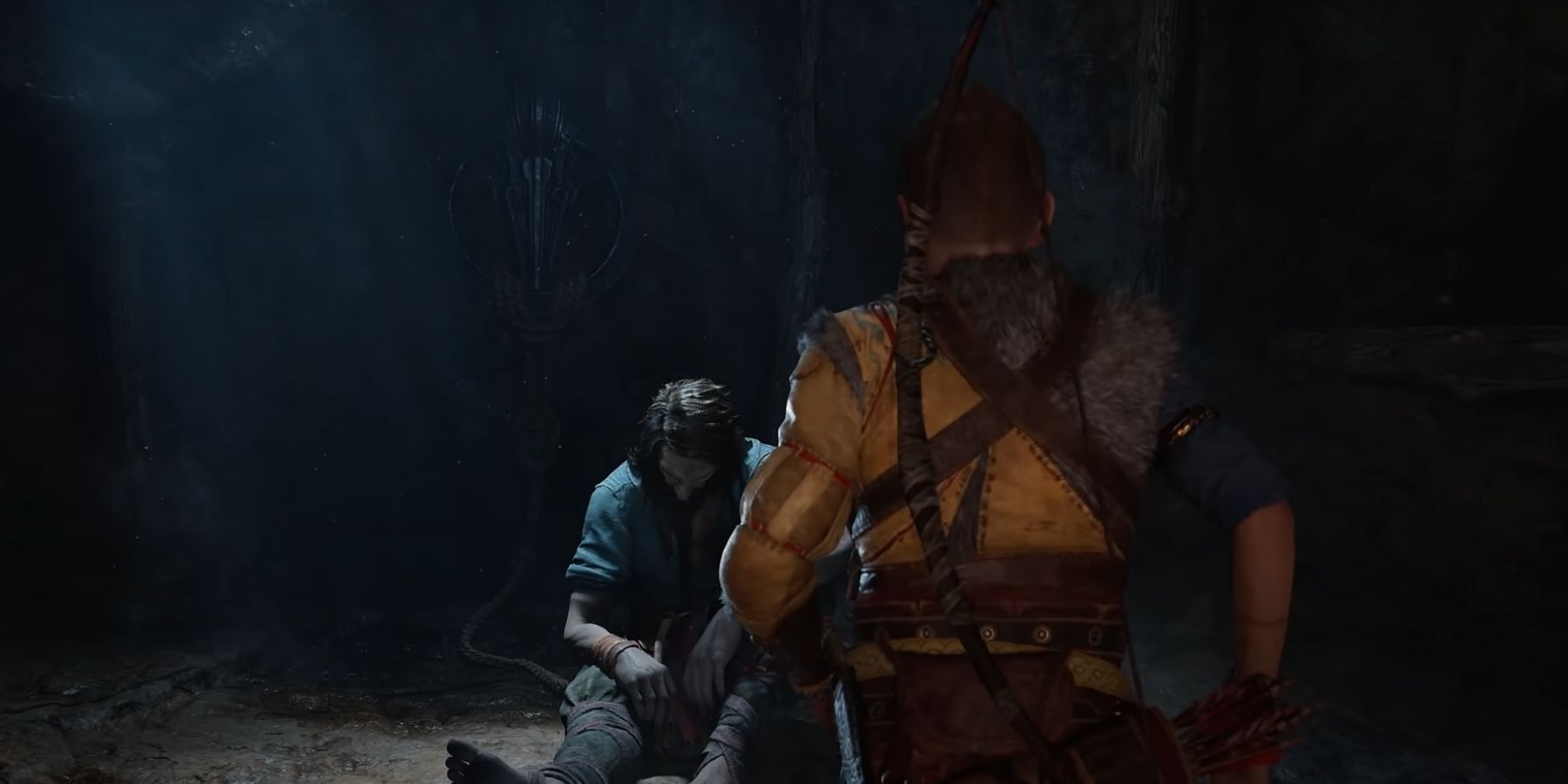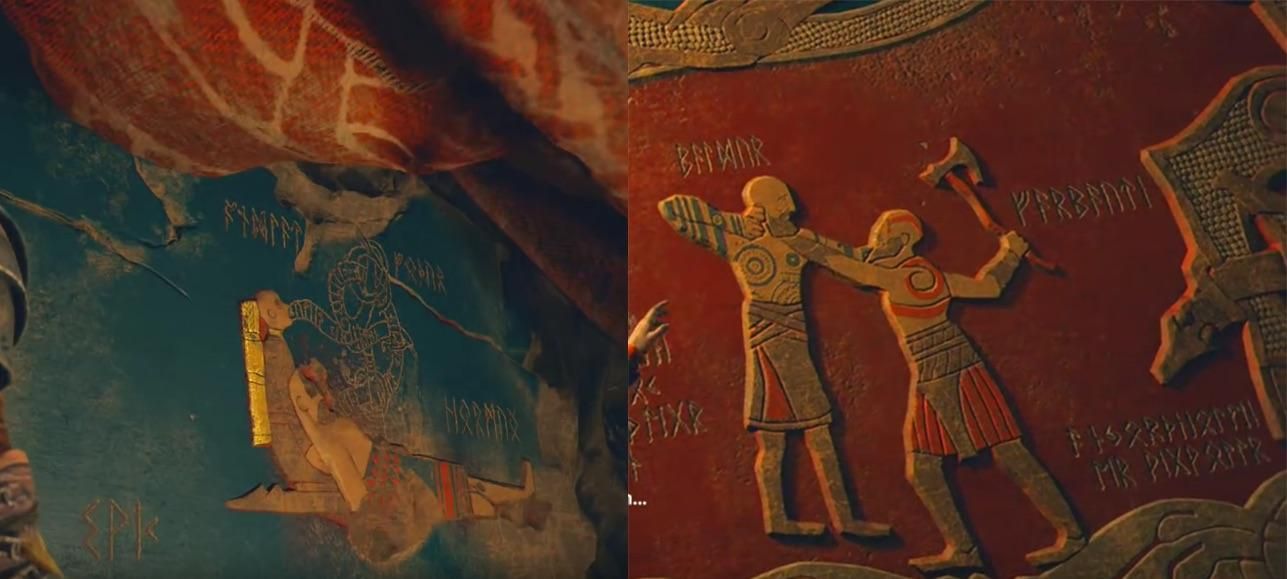The official gameplay trailer for God of War: Ragnarok was released at the PlayStation Showcase. The video gave fans of the franchise plenty to unpack as they try to figure out the implications for the Norse apocalypse, Kratos, and Atreus.
Tyr did not make a direct appearance in the last God of War, and whether or not the Norse god of war was even alive was left ambiguous. The new trailer, however, confirms that Tyr is alive during God of War: Ragnarok, and he even appeared in person, towering over Kratos as the Ghost of Sparta asked for his aid. Beyond his size, Tyr’s appearance had some notable features that have huge implications for the story of God of War: Ragnarok and its version of the Norse end times.
Tyr’s Hand
In one part of the new trailer, Atreus approaches Tyr, who is slumped on the ground and appears to be bound by a rope. In this shot, it’s clear that Tyr has two hands. The Tyr of Norse mythology lost his right hand during the binding of Fenrir, the great wolf who is prophesized to devour Odin during the final battle of Ragnarok.
In the myths, Tyr offered his right hand to the wolf as part of a promise that if Fenrir was bound the beast could bite his hand off. The Aesir bound Fenrir in the hopes of preventing him devouring Odin, and Tyr voluntarily lost his hand, a moment often used to show how honorable the god was.
Not only does God of War: Ragnarok’s Tyr appear to have two hands, but his right hand has some kind of binding around the wrist. It could be that Tyr’s hand was in fact bitten off by Fenrir, and that the bindings are from its reattachment.
Another possibility is that, in the God of War timeline, Fenrir has not been bound yet. However, this seems unlikely for a few reasons. For a start, Ragnarok appears to be well underway in God of War: Ragnarok, while in the myths Fenrir was bound before the events of Rangarok and breaks free after the end of Fimbulwinter.
Second, there are several allusions to the binding of Fenrir in 2018’s God of War. Mimir mentions the wolf by one of his alternate names, Hrodvitnir, and in another conversation explains how the Dwarves Brok and Sindri once made an unbreakable chain using some of the same reagents Kratos and Atreus are gathering for Motsognir’s corpse. These ingredients include a birds spit and a cats footstep, which were used to make Gleipnir, the chain used to bind Fenrir.
It seems possible then that the version of Tyr seen in the most recent God of War: Ragnarok trailer was already involved in the binding of Fenrir, and that he lost his hand before having it reattached with whatever binding can briefly be seen in the trailer. God of War 2018 also suggests, however, that the World Serpent seen in God of War’s Lake of Nine was sent back in time from Ragnarok when his fight with Thor shook the tree of life with such force that it splintered.
It’s possible that if time travel is involved in God of War: Ragnarok, this Tyr hasn’t lost his hand yet. It’s also possible, because the Tyr in the trailer is is bound by his right hand, that through a cruel twist of fate someone will have to chop off Tyr’s hand to free the Norse god of war. The rope binding Tyr’s hand is even attached to a metal symbol resembling a wolf’s head, a direct reference to Fenrir biting off the god's hand in the myths.
Tyr's Hair
Tyr’s hand isn’t the only notable detail in the trailer. Tyr’s long hair makes him very visually distinct from Kratos, which potentially debunks one fan theory from the last God of War. At the end of 2018’s God of War Kratos and Atreus come across a mural in Jotunheim which shows both the events of the game so far and some of the events of Ragnarok that are yet to come.
Once Atreus has already left the room, a piece of tapestry blows aside to reveal the mural’s final panel to Kratos. The panel shows Atreus cradling what appears to be a dying man. Many took this man to be Kratos, but he doesn’t have the same tatoos or clothing that Kratos does in his depictions elsewhere in the same mural, while the depitction of Atreus remains consistent throughout.
There is damage to the mural which leaves the figure in Atreus’ arms without a right arm, which made it seem possible that it was actually a bait-and-switch, and that Tyr, not Kratos, would die. However, the figure in the panel is also bald, which fans now know God of War: Ragnarok’s Tyr is not. His great size also doesn’t seem to be reflected in the Jotunheim mural.
This makes it seem more likely that the figuring lying in Atreus’ arms is Odin – damage to the mural also makes it unclear whether he’s missing an eye like the Norse All-Father. It’s also possible that if time travel is involved the figure is an older version of Atreus, who is fulfilling the part of the Ragnarok prophecy where Loki is morally wounded and dies watching the world consumed by Surtr’s fires.
Either way, fans can now likely write off the possibility that the final panel in the Jotunheim mural depicts Tyr. The exact implications of Tyr having his right hand in the trailer have yet to be fully revealed, and as with so much in the upcoming sequel, the detail is only further complicated by the potential for time travel as introduced in the World Serpent’s plotline.
God of War: Ragnarok is set to release on PS4 and PS5 in 2022.


